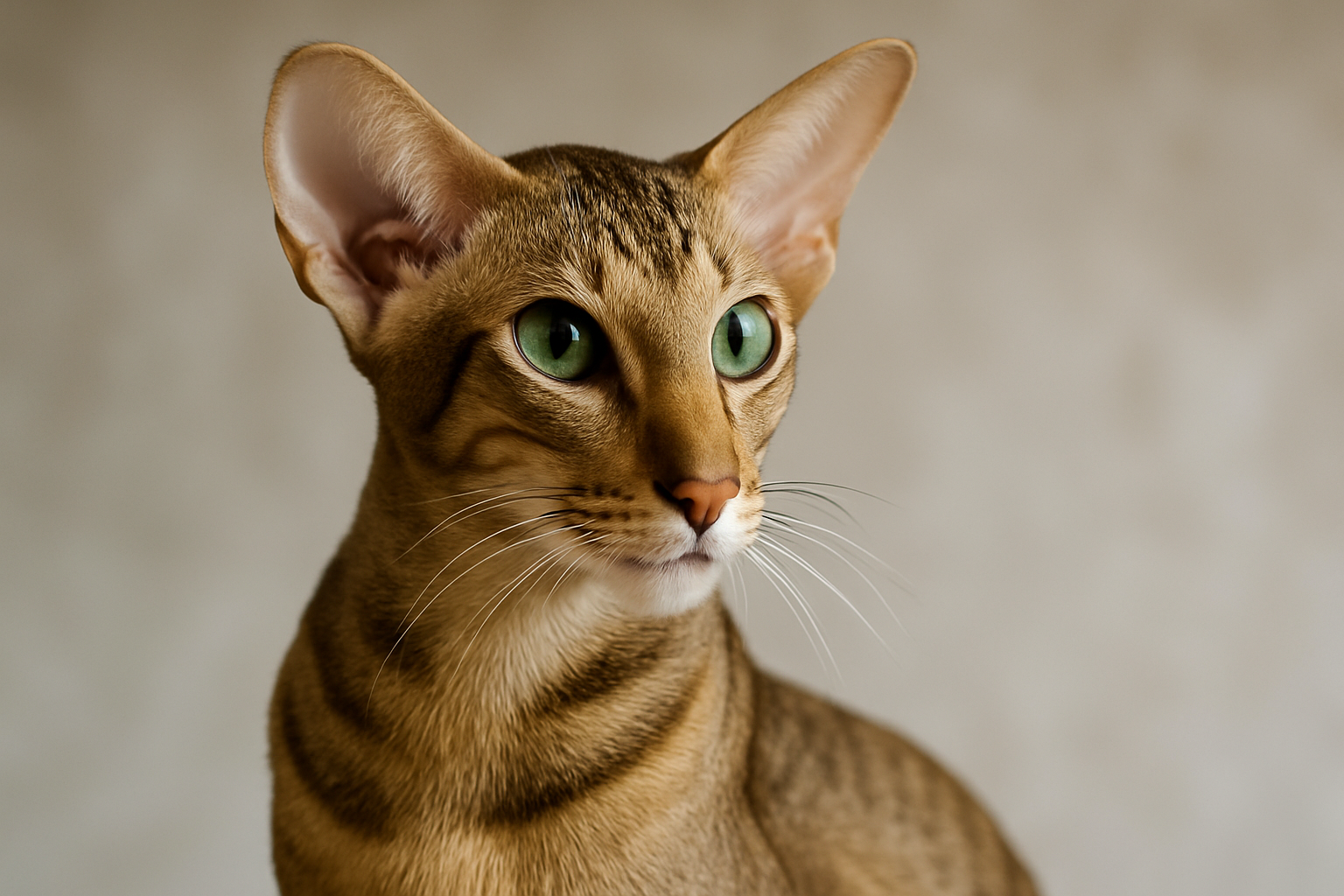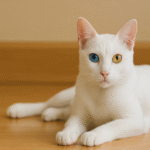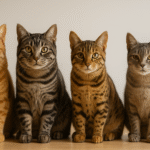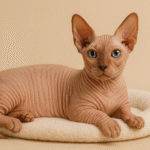There’s something unforgettable about the Oriental Cat. From those oversized ears to the stunning variety of coat colors, they’re sleek, striking, and full of personality. But don’t let the polished appearance fool you — these cats are playful, people-loving chatterboxes who want nothing more than to be your shadow.
Whether they’re leaping across the room or meowing their thoughts about dinner, Oriental Cats bring energy, intelligence, and affection in a package that’s as fun as it is unique. If you’ve been curious about this bold, people-oriented breed, you’re in the right place.
Quick Breed Facts
- Origin: United States (developed from Siamese lines)
- Breed registries: CFA, TICA, GCCF
- Weight range: 6–12 pounds
- Lifespan: 12–15 years
- Coat: Short or long, fine and glossy
- Colors and patterns: 300+ combinations; solid, tabby, bi-color, pointed, and more
- Eye color: Green (most common), blue, odd-eyed
- Grooming: Low
- Activity level: High
- Affection level: Very high
- Vocality: Extremely vocal
- Good with children: Yes
- Good with other pets: Yes
History & Origin
The Oriental Cat was developed in the United States during the 1950s and 60s by breeders who loved the Siamese — but wanted more variety. By crossing Siamese cats with breeds like the American Shorthair, Russian Blue, and Abyssinian, they created a cat that kept the slim, elegant body of the Siamese but came in a rainbow of colors and patterns.
Although they share ancestry, Oriental Cats have their own breed identity. The Cat Fanciers’ Association (CFA) recognizes both Oriental Shorthair and Oriental Longhair varieties. These cats are closely tied to the Siamese and are often grouped together as part of the “Oriental Family.”
Personality & Temperament
Oriental Cats are famous for their big personalities. They’re outgoing, social, and love being involved in whatever you’re doing — from typing on a keyboard to brushing your teeth. These cats often follow their humans from room to room, chirping, meowing, and making their opinions known.
They’re intelligent and love interactive play, puzzles, and games that challenge their clever minds. Many Oriental Cat parents describe them as more like dogs than cats because of their loyalty, trainability, and constant need to be the center of attention. If you’re looking for a quiet, aloof cat, this isn’t it.
Appearance & Coat
With their sleek, tubular bodies, long legs, almond-shaped eyes, and oversized ears, Oriental Cats are truly showstoppers. Their look is often described as “elegant” or even “exotic,” and they move with grace and purpose. Their short, fine coat lies close to the body, giving them a polished appearance, while longhaired versions have a silky, flowing coat.
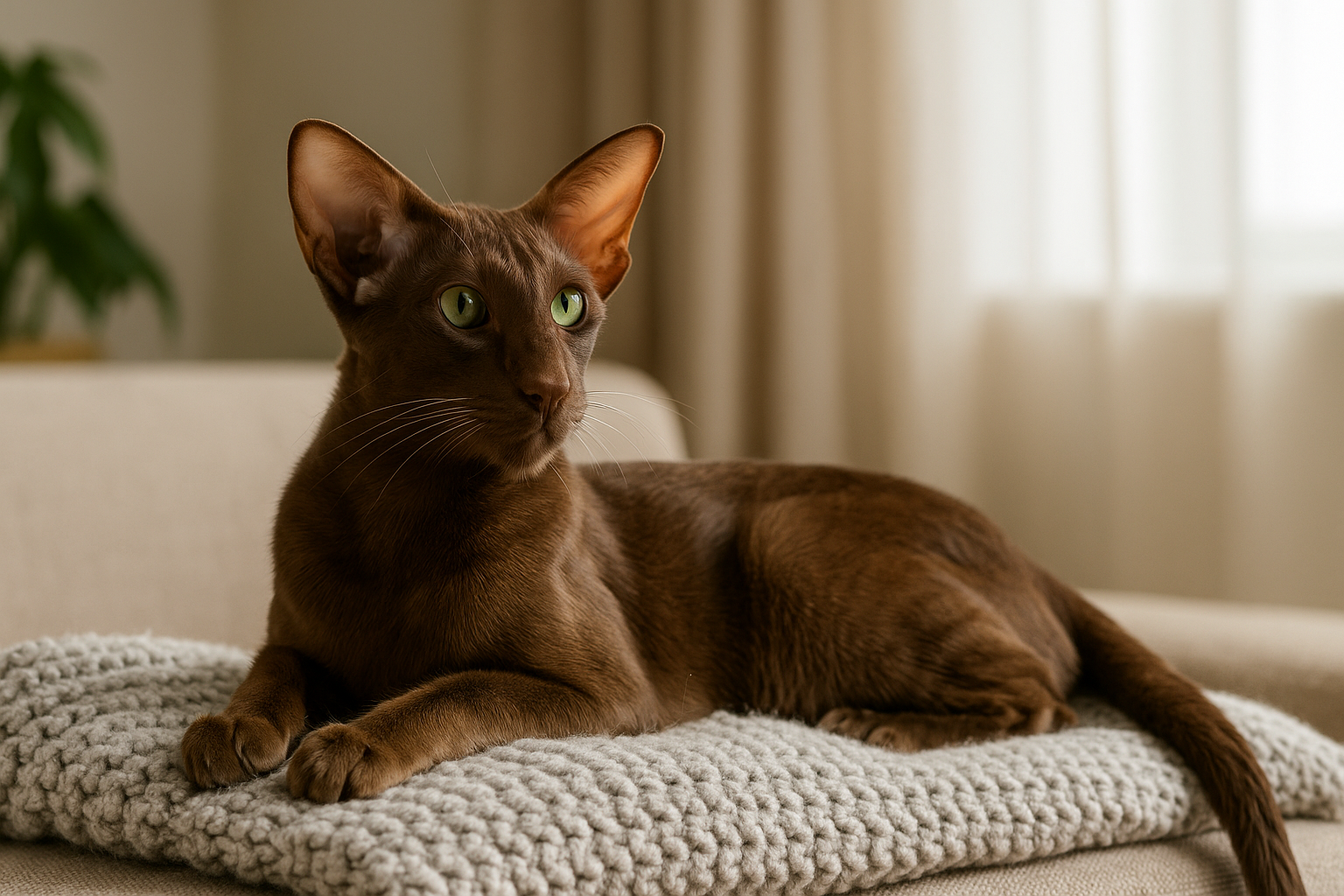
Coat color is one of the most striking things about this breed. Orientals come in over 300 recognized colors and patterns, including solids, smokes, tabbies, and pointed varieties. Eye color is typically green, though blue and odd eyes (one blue, one green) can also occur — especially in white Orientals or those with Siamese-like color points.
Activity & Play
These are high-energy cats who thrive on play, stimulation, and interaction. If you don’t provide entertainment, they’ll find their own — and it might involve your toilet paper or your favorite houseplant. They do best in environments where they can climb, jump, and explore. Think cat trees, wall perches, and plenty of vertical space.
Because of their intelligence and energy, Oriental Cats love puzzle toys and interactive games. They’re ideal candidates for clicker training and even leash walking. They also do well with other pets, especially if they have another playful cat or dog to burn off energy with.
Grooming & Care
Grooming an Oriental Cat is blissfully easy. The shorthaired variety has a close-lying, single coat that rarely tangles and sheds minimally. A quick brush once a week is usually enough to keep the coat looking shiny and sleek. Longhaired Orientals need brushing a few times a week to prevent tangles, but they still shed less than some other longhaired breeds.
Like all cats, they benefit from routine nail trimming, dental care, and ear checks. Their ears are quite large and open, so weekly cleaning may be needed to keep wax buildup in check.
Health & Lifespan
Oriental Cats are generally a healthy cat breed with a lifespan of about 12 to 15 years, though some live well into their late teens with good care. Because of their Siamese ancestry, they may be predisposed to certain conditions like progressive retinal atrophy (PRA), dental issues, hypertrophic cardiomyopathy (HCM), or hyperthyroidism.
Regular vet visits and a balanced diet are key to preventing common health problems. If you notice signs like excessive meowing, poor appetite, or changes in behavior, don’t wait — early intervention can help extend your cat’s life and quality of living.
Family Compatibility
If you have a bustling household with kids, other pets, or lots of visitors, the Oriental Cat is likely to fit right in. They’re naturally outgoing and form strong bonds with people. In fact, they dislike being left alone for long periods and may become anxious or destructive if bored.
This breed thrives in families who can give them plenty of love and attention. They’re not lap cats in the traditional sense — they prefer to perch on your shoulder or curl up next to your keyboard. But make no mistake — they are very affectionate and crave companionship.
Recommended Supplies
To keep your Oriental Cat happy and healthy, invest in a few breed-specific essentials. They need plenty of stimulation, so rotating toys and vertical play spaces are must-haves. Soft bedding, slow feeders, and gentle grooming tools can also help meet their needs.
Because Oriental Cats are intelligent and social, enrichment is just as important as food and water. Try puzzle feeders, interactive wand toys, or even a window perch to keep them entertained while you’re out. The more you can keep their minds busy, the happier and more relaxed they’ll be.
Oriental Cat FAQs
Are Oriental Cats hypoallergenic?
Oriental Cats are often labeled as “low allergen cats” due to their short coat and minimal shedding, but they’re not completely hypoallergenic. If you’re allergic to cats, spend time with the breed before committing — reactions vary from person to person.
How much does an Oriental Cat cost?
The Oriental Cat price can vary widely depending on pedigree, breeder, and coat color. Most kittens cost between $600 and $1,500, though rare colors or show-quality lines can be more expensive.
How are Siamese and Oriental Cats different?
While they share a body type and ancestry, Siamese cats have limited point coloration (like seal or blue point), while Oriental Cats come in hundreds of colors and patterns. The two breeds also share personality traits like vocalization, intelligence, and strong bonds with humans.
Is the Oriental Cat Right for You?
If you want a social, intelligent, and affectionate cat who’s more companion than roommate, the Oriental Cat might be your perfect match. These felines thrive on interaction and make fantastic family cats — especially in homes with kids, other pets, or stay-at-home parents.
They’re not the right fit for quiet, hands-off households or people who want a chill, low-maintenance cat. But if you’re ready to have full conversations with your cat (and get chirped at when dinner is late), the Oriental will keep your days interesting, your heart full, and your lap warm.

